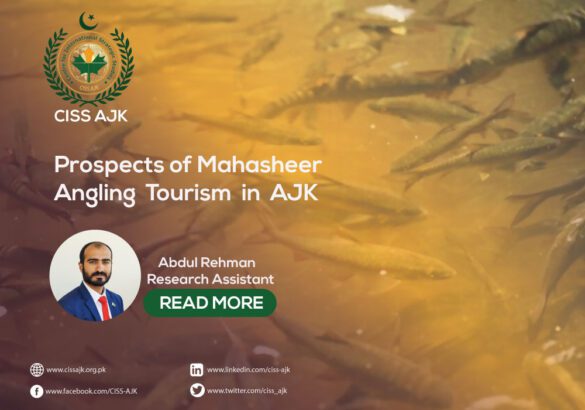749
The looming economic challenges faced by Pakistan in general and AJK in particular demand exploration of additional commercial avenues. Azad Jammu and Kashmir is a habitat for numerous wildlife that can bring national and international tourism and trophy hunters alike. Trophy hunting is broadly defined as hunting carried out for recreational purposes (i.e., not for subsistence) targeting animals with specific characteristics such as the thrill involved in huntingor for horns, antlers, skulls, skins, tusks, or teeth. It involves payment of a fee by a foreign or local hunter for an experience of hunting a particular species with desired characteristics. The hunter retains the horn, antlers, tusk, head, or other body parts of the animal as mementos or a “trophy”, and the meat is usually left for food to the local people. Sustainable utilization of natural resources is an economically and socially effective long-term livelihood plan. Sustainable wildlife management can help rural communities flourish since wild animals have economic value. Trophy hunting is a lucrative way by which community-based conservation (CBC) can generate revenue from the sustainable use of wildlife. Trophy hunting can fetch high prices, so, can be a useful tool to finance the conservation of the hunted species. It is also accepted as ecologically friendly wildlife management, because it requires little infrastructure, draws small crowds, produces limited litter compared to ecotourism, and only a small fraction of the population i.e., old males, having aesthetic value, are harvested. The activity also generates significantly more revenue per customer than ecotourism. In several conservancies around Punjab, Khyber-Pakhtunkhwa, and Gilgit, trophy hunting models have already been put into practice. For instance, 38 markhor trophy hunts were conducted in Gilgit between 2000–1 and 2019–20 and it yielded a total of $2.084 million. 20% of this sum i.e., $0.416 million, was put in the government treasury for management, with the remaining eighty percent, i.e., $1.667 million, going to the local communities running the markhor trophy hunting program. AJK’s rivers are home to rare fish species like Golden Mahasheer and Himalayan Trout. Golden Mahasheer “theTiger of waters”, locally known as Sakkar or Cherek, is the undisputed king of the Himalayan waters. It is a migratory cold-waterfish. Mahseer’s habitat has highly oxygenated water with a rocky bed. Once Found from Afghanistan to southeast Asia “The Mahasheer” (Barbus tor putitora) is the most spectacular fish present in many of the rivers originating from the Himalayas. In AJk it is mainly present in the Poonch River and its tributaries. River Poonch meanders through Azad Jammu Kashmir (AJK), cutting through the low Himalayan mountains as it passes through one picturesque valley after another. Its shallow gravel beds and rocky shores make it the ideal breeding ground for the mighty Mahasheer fish. Inhabiting the southern watersheds of the Himalayas, and opting to live in lakes or dams, the Mahasheer migrates upwards to the tributaries each year to breed in the gravel stream beds. Conservationists say the Golden Mahasheer is the largest freshwater fish on earth found in many of the rivers originating from the Himalayas. Anglers call it the best sports fish while culinary experts believe it is the best-tasting one. Water is one of the most important resourcespossessed by the state of AJK. The fish industry can augment this potential. But it will require a comprehensive effort for breeding, conservation, and marketing of Mahasheer to lure international anglers. To conserve Mahasheer, From Degwar Madarpur, where the 62-kilometer long Poonch river enters the AJK territory to Dadyal — where it drains into Mangla dam ¬— has been declared as the first-ever aquatic protected area for a globally threatened Mahasheer fish.Despite many deficiencies, the Wildlife and Fisheries Department of AJK is workingproficiently to conserve the Mahasheer fish. As a result,the number of fish in the Poonch river is flourishing.Wildlife and Fisheries Department can exert conservation mechanisms but extraction of maximum profit from Mahasheer requires international publicityand framework to accommodate and facilitate international anglers in AJK.It can be done with a liaison of AJK Wildlife and Fisheries Department and the Tourism department. AJK Rural Support Programme should also be taken into the loop for the benefit of the communities dwelling around Poonch River and its tributaries and dependant on them for livelihood. These communities can be involved in a participatory conservation program and in return,they could be entitled to a large sum of the revenue generated from the protected area. Traditionally AJK has very few avenues that are being utilized for revenue generation,so its economy primarily hinges upon the support from Islamabad. AJK government needs to explore new innovative ideas to diversify its revenue generation and move towards self-sufficiency. Developing a sustainable fish industry would be a step in the right direction.



